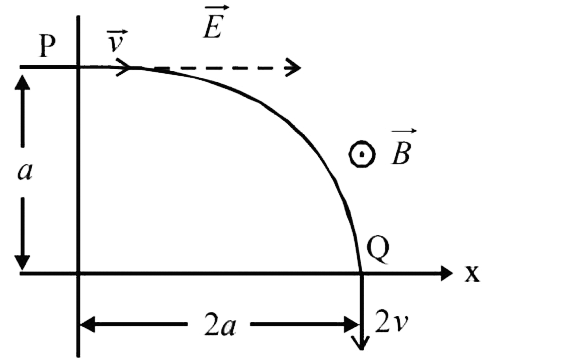A
B
C
D
Text Solution
Verified by Experts
The correct Answer is:
Topper's Solved these Questions
MOVING CHARGES AND MAGNETISM
NARAYNA|Exercise LEVEL-V (SINGLE ANSWER QUESTION)|85 VideosMOVING CHARGES AND MAGNETISM
NARAYNA|Exercise LEVEL-VI (SINGLE ANSWER QUESTION)|81 VideosMOVING CHARGES AND MAGNETISM
NARAYNA|Exercise LEVEL-III|45 VideosMAGNETISM AND MATTER
NARAYNA|Exercise EXERCISE - 4 (SINGLE ANSWER TYPE QUESTION)|17 VideosNUCLEAR PHYSICS
NARAYNA|Exercise LEVEL-II-(H.W)|9 Videos
Similar Questions
Explore conceptually related problems
NARAYNA-MOVING CHARGES AND MAGNETISM-NCERT Based Questions
- A particle of charge +q and mass m moving under the influence of a un...
Text Solution
|
- Two coaxil solenoids 1 and 2 of the same length are set so that one is...
Text Solution
|
- A current loop ABCD is held fixed on the plane of the paper as shown i...
Text Solution
|
- A current loop ABCD is held fixed on the plane of the paper as shown i...
Text Solution
|
- A current carrying loop is placed in the non-uniform magnetic field wh...
Text Solution
|
- Electric field strength bar(E)=E(0)hat(i) and bar(B)=B(0)hat(i) exists...
Text Solution
|
- Two moving coil meters, M(1) and M(2) have following particulars: R(...
Text Solution
|
- A circular coil of 30 turns and radius 8.0cm carrying a current of 6.0...
Text Solution
|
- Two concentric coil X and Y of radii 16cm and 10cm respectively lie in...
Text Solution
|
- A toroid has a core (non ferromagnetic material) of inner radius 25cm ...
Text Solution
|
- A uniform magnetic field of 1*5T is in cylindrical region of radius 10...
Text Solution
|
- A cubical region of space is filled with some uniform electric and mag...
Text Solution
|
- Two long wires carrying current I1 and I2 are arranged as shown in fig...
Text Solution
|
- A current carrying loop consists of 3 identical quarter circles of rad...
Text Solution
|
- A multirange voltmeter can be constructed by using a galvanometer circ...
Text Solution
|
- A long straight wire carrying current of 25A rests on a table as shown...
Text Solution
|
- A 100 turn rectangular coil ABCD (in XY plane) is hung from one arm of...
Text Solution
|
- A rectangular conducting loop consists of two wires on two opposite si...
Text Solution
|
- An electron and a position are released from (0, 0, 0) and (0, 0, 1*5R...
Text Solution
|
- Five long wires A, B, C, D and E, each carrying current I are arranged...
Text Solution
|
